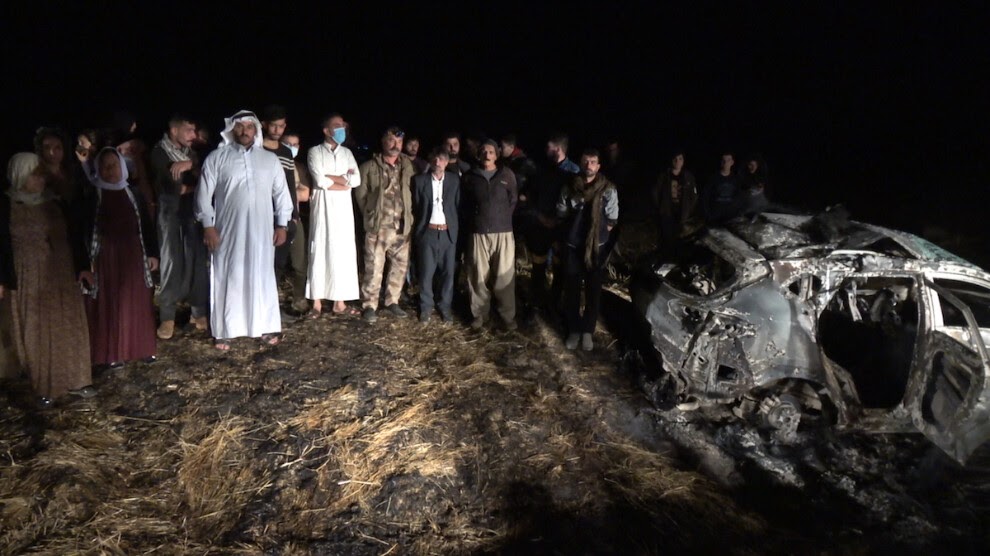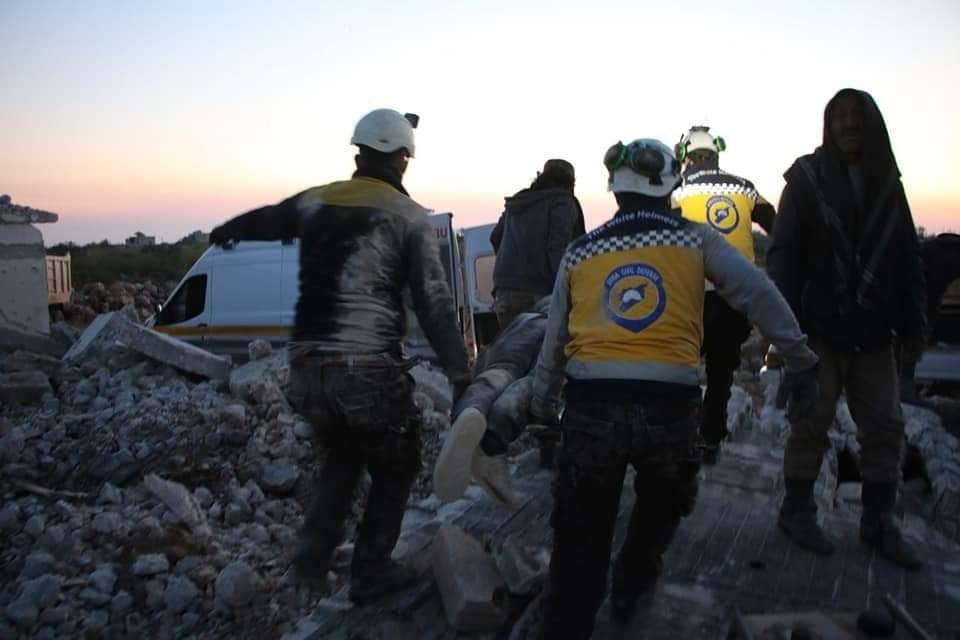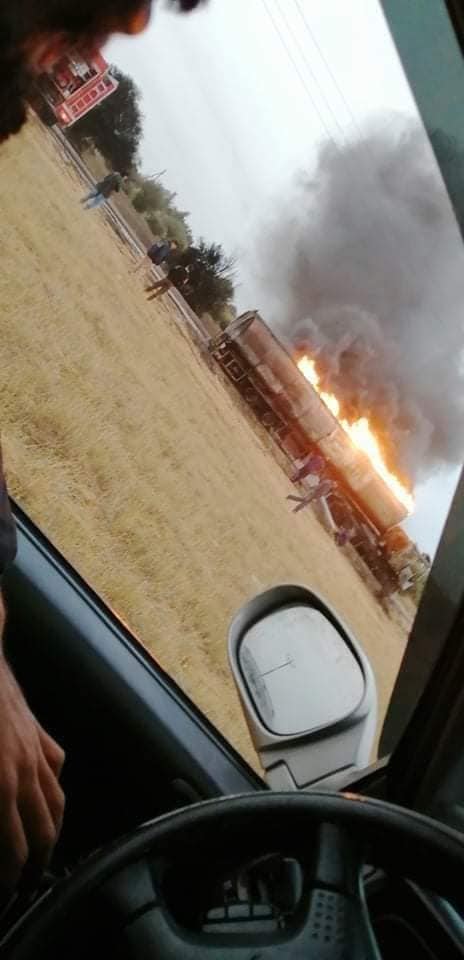Major Conflict Monitoring
Civilian harm from foreign military action in all tracked conflicts have remained low, with little change observed in November compared to previous months. In Syria, Russian actions have decreased from October. It has also been a quieter month for US-led actions in Syria, although reports of US-led strikes on Iranian forces in Syria have continued. While most belligerents have seen their military activity in Syria scale back, Turkey began escalating its shelling of key towns held by the predominantly-Kurdish Syrian Democratic Forces (SDF), with Ain Issa bearing the brunt of the military escalation.
In Iraq, Turkish strikes on fighters belonging to the Kurdistan Workers Party (PKK) continued during the month, with civilians caught in the crossfire once again. Meanwhile, International Coalition-led actions against ISIS remained sporadic throughout the month, especially in central and northern Iraq.
In Libya, the ceasefire that was officially signed between the Government of National Accord (GNA) and the Libyan National Army (LNA) at the end of October has largely held, with only sporadic reports of strikes taking place in the country.
November also saw a major breakthrough for Airwars, with the launch of The Credibles, published in conjunction with The Washington Post. After several years of patient engagement with the US military, the US-led Coalition against the so-called Islamic State provided Airwars with the near locations of nearly all of the 344 publicly confirmed civilian harm events in the war against ISIS in both Iraq and Syria. In total this interactive dataset allows for the first time the accurate location of almost 1,400 civilian deaths the coalition has admitted to causing since 2014. These located events represent the most accurate and comprehensive data ever publicly revealed by the US military about the harm it causes in war and raises hopes for families of those killed for potential apologies and ex gratia payments.
Turkish actions in northern Syria escalate as fears loom over possible offensive
November saw a marked increase in Turkish military activity in northeastern Syria, centred largely around the town of Ain Issa and other areas controlled by the SDF. Airwars tracked six civilian harm incidents in Syria during the month, five of which occured in the last two weeks of November in and around the town of Ain Issa. According to local reports, four civilians were killed and up to 20 others were injured. In addition to this, there have been numerous reports suggesting that the Turkish-led shelling of the town has targeted residential homes, leading to large levels of displacement in Ain Issa.
While Turkish pressure on Ain Issa had been constant in the weeks prior to the establishment of a Turkish military base just north of Ain Issa on November 19th, the situation for civilians has deteriorated significantly since then. Tensions between the SDF and Turkish-backed forces in the region reached new heights on November 24th after an attempted offensive by the Turkish-backed Syrian National Army (SNA) near Ain Issa failed and resulted in the deaths of 31 SNA fighters. This incident prompted a significant increase in Turkish shelling on Ain Issa.
The recent escalation has further raised fears that Turkey is preparing to gear up for another offensive in northeastern Syria. Turkey’s weariness over the continued influence exerted by the PKK-affiliated YPG so close to the Turkish-Syrian border has not gone away despite the military gains made last October, which saw Turkey take control of the border strip between Tal Abyad and Ras al-Ain and Kurdish forces pull back 32 kilometers from the Turkish border. While support for the SDF by the United States remains strong, the current presidential transition period may serve as an opportunity for Turkey to launch an offensive against the Kurdish-led group. Kurdish officials believe that Joe Biden’s arrival to the Oval Office could make it significantly harder for Turkey to achieve its objectives through military means, given the strong support Kurdish groups had under previous Democratic President Barack Obama.
The last week of the month saw the highest number of civilian casualties. On November 23rd, Turkish-led forces launched an attack on the Ain Issa camp and the villages of Maalak and Sidon, north of the Ain Issa district. The attack took place at night, with local sources claiming that the areas were targeted with “hundreds of mortar shells and rockets”. At least eight civilians were injured in the attack. Just five days later, two civilians were reported killed and up to four others including a woman and her two children were injured as Turkish forces targeted the city once again at night.
In Iraq, Turkey’s campaign on the PKK has continued this month, albeit at a lower intensity compared to the summer. With PKK fighters dispersed in the mountains of the Kurdistan Region of Iraq, most of Turkey’s strikes target remote areas with low population densities. Despite this, reports of civilian harm from these strikes have continued.
On November 8th, one civilian was reportedly killed in a Turkish drone strike on an alleged PKK vehicle near the town of Khalaf in the Sinjar district, Nineveh province. Up to five militants were reportedly also killed and at least three others wounded. According to Hawar news, the strike killed a civilian who was working on a nearby water well.
Additionally, tensions between the PKK and the Kurdistan Democratic Party (KDP) increased during the month. This came when the PKK and some Peshmerga affiliated with the KDP clashed directly in Chamanke District on November 4th. According to Rudaw, PKK fighters attacked Peshmerga forces in the area, killing one soldier and injuring two more. Although the two groups did not reconcile following this incident, no further clashes were reported during the month.

People looking at the vehicle that was targeted by alleged Turkish drones near Sinjar on November 8th, 2020 (via Hawar News).
Sporadic Russian strikes on Idlib continue
The beginning of the month saw a notable escalation in Russian strikes and Syrian Regime-led shelling on rebel-controlled parts of Idlib Governorate. This came off the back of rising tensions between Turkish-backed opposition groups and Russia following Russian strikes on a Faylaq al-Sham camp on October 26th near the town of Kafr Takharim in northern Idlib, close to the border with Turkey, killing dozens of fighters. Airwars researchers tracked four civilian harm incidents during the month – a slight decrease from October’s tally of six incidents resulting in civilian harm. Up to nine civilians were killed in the attacks.
On November 4th, at least four civilians, including a child, were killed in alleged Russian or Syrian regime artillery strikes on the city of Ariha, Idlib governorate. Among the victims were two men working for the Ihsan Relief and Development Organization. Up to six others were reportedly wounded. The bombardment also targeted the Martyr Zakariya Saedou School, partially destroying the yard and lightly damaging other parts of the school. Local sources named the victims as Raghid Zakariya Al Jasri, a driver for the Ihsan Relief and Development Organization, Samer Madi, Rimas Hindawi, a child who was killed while at school and Ibrahim Al Younis, a psychological support worker at Ihsan Relief and Development Organization

Injured civilians being brought to an ambulance after alleged Russian or Syrian regime strikes on Ariha on November 4th, 2020 (via SNHR).
The week after, on November 13th, a number of Russian soldiers were wounded after entering a minefield in Jabal al-Zawiya. Following this, further strikes were reported on towns in Idlib including Arab Saeed in Idlib’s western countryside. No civilians were reportedly harmed in the airstrike.
This month has seen local sources recording the long-term impact that Russian raids on populated areas have on civilians. On November 17th, two separate incidents of civilians being harmed as a result of previous Russian actions were reported. In the town of Qastoun in Hama, a civilian by the name of Nassar Ahmad Nassar died when his house collapsed on him. According to local sources, the man’s home had been previously severely damaged by alleged Russian or Syrian regime strikes. A similar incident occurred in the Sarja village of Idlib, where a civilian died and another civilian was injured when the roof of their home also collapsed after being subjected to heavy bombing from Russian warplanes.
Meanwhile, Russian and Syrian regime forces resumed clashes with ISIS militants in northwestern Syria. The clashes have mainly been centered in the desert areas that stretch between the governorates of Hama, Aleppo, and Raqqa. Major clashes were reported on November 28th, when regime forces lost at least ten soldiers and 16 ISIS militants were killed in clashes.

Syrian Civil Defence teams carrying a victim after a civilian home in Sarja village collapsed on November 17th, 2020, following alleged Russian or Syrian regime strikes on an unknown date (via SNHR).
US-led Coalition in Syria and Iraq
The International Coalition continued its operations across Syria and Iraq during the month of November. Civilian harm once again fell to low levels, with only one incident reported in November in Syria.
In both Syria and Iraq, the US-led Coalition and its partners on the ground were relatively active in the first week of the month. According to the Coalition’s spokesperson, Colonel Wayne Marotto, local forces carried out 15 operations against ISIS militants during the first week of November.
In Syria, the only alleged civilian harm incident took place during this period. Local media sources reported that on November 7th, the US-Led Coalition conducted a joint operation with the SDF against suspected ISIS members in the village of Ghariba Al Sharqiya, north of Deir Ezzor and arrested three suspected ISIS members. Local sources reported that during this operation a man by the name of Mohammed Abdullah Al Dibs, also known as Abu Fatima, was killed in the crossfire. His body was later found near the Al Khabour river. While some local sources claimed that this man was a civilian, some outlets insisted that Abu Fatima was not a civilian, and instead had been an assistant of Saddam Al Jabal, ISIS commander of the Euphrates area during the group’s control of the territory.

The body of Mohammed Abdullah al-Dibs, which was found near the Khabour River on November 7th (via Euphrates Post)
Furthermore, Iranian positions in Syria were reportedly targeted by US warplanes. It is not clear whether these strikes were carried out unilaterally or as part of the International Coalition. There are also doubts about whether the US was involved at all in these attacks. On November 8th local sources reported that airstrikes conducted by US warplanes targeted Iranian Revolutionary Guard officers in Albu Kamal. Further strikes were reported on both November 12th and 13th targeting Iranian-backed groups in the deserts of Mad’an and Al Sabkha, in Raqqa’s southern countryside. Another airstrike was allegedly carried out targeting Iranian-backed groups around the town of Mohsen in Deir Ezzor’s eastern countryside on November 14th.
Meanwhile in Iraq, the US-led Coalition coordinated with local Iraqi forces on a number of operations against ISIS across the country. The operations focused mainly on the Makhoul, Khanouka and Hamrin mountain ranges, where ISIS continues to maintain a presence. The Coalition confirmed that it had conducted a series of strikes on ISIS targets in the Hamrin Mountains on November 7th as well as assisting Iraqi Security Forces (ISF) in their operations in the Makhoul Mountains on November 8th.
Later in the month, Iraqi forces, in conjunction with the US-led Coalition, carried out a major operation in the area between Wadi Zgaitoun and Wadi al-Khanajer in Kirkuk Governorate on November 19th and 20th. The Iraqi Counter-Terrorism Services released footage of airstrikes that were carried out on alleged ISIS guesthouses in that area.
جانب من الضربات الجوية التي إستهدفت مضافات بقايا داعـش في المنطقة الرابطة بين
وادي زغيتون – وادي الخناجر ..#جهاز_مكافحة_الإرهابPart of the air strikes that targeted ISIS remnants' guesthouses in the area linking Wadi Zgaitoun – Wadi Al-Khanajer pic.twitter.com/wt5QeJ77tU
— جهاز مكافحة الإرهاب (@iraqicts) November 20, 2020
Libya: Month of calm following official ceasefire
Fighting in Libya has remained minimal into November following the official ceasefire deal that was signed in Geneva on October 23rd.
Only two airstrikes were reported in November in Libya, the same number as in October. Both strikes were allegedly conducted by Turkish drones on fuel smugglers.
The first event took place on November 16th near Sabratha. The second incident took place one day later in Al Ajaylat. Neither resulted in reports of civilian harm.
US counter-terrorism campaigns
Yemen
In Yemen, local reports surfaced of a possible US drone strike in Marib province on November 14th. According to local media sources, a US drone hit a farm near the Bin Maelli station and the al-Nakhil Resthouse in Wadi Obeida. According to reports, the drone strike targeted three al-Qaeda members. The strike injured one member, but the other two managed to survive the attack.
CENTCOM claimed that there were no US military strikes during November 2020 in Yemen. The last publicly declared CENTCOM action was on June 24th 2019 in Al Bayda province.
#مارب
طائرة بدون طيار امريكيه تستهدف ثلاثه اشخاص من تنظيم القاعده بالقرب من استراحة النخيل ـ محطة بن معيلي صباح اليوم السبتحيث اصيب احدهم جراء الضربه فيما نجى الاثنين الاخرين منها #علي_النسي
— علي النسي (@aalnaasi) November 14, 2020
Somalia
Only one event with potential US involvement was reported in November, one less than in the previous month.
One CIA officer officer, later named as John Goodboe by The Intercept, was allegedly killed by an IED or VBIED. The exact circumstances of the incident remain unclear. A Guardian report said he was killed on November 6th while other sources reported he died later in November.
AFRICOM stated in an email to Airwars that no other US actions have been conducted in November.
Pakistan
There were no publicly alleged CIA strikes in Pakistan against either Al Qaeda or the Taliban during November 2020. The last such reported US strike was in August 2018.
November also saw a major breakthrough for Airwars, with the launch of The Credibles, published in conjunction with The Washington Post. After several years of patient engagement with the US military, the US-led Coalition against the so-called Islamic State provided Airwars with the near locations of nearly all of the 344 publicly confirmed civilian harm events in the war against ISIS in both Iraq and Syria. In total this interactive dataset allows for the first time the accurate location of almost 1,400 civilian deaths the coalition has admitted to causing since 2014. These located events represent the most accurate and comprehensive data ever publicly revealed by the US military about the harm it causes in war and raise hopes for families of those killed for potential apologies and ex gratia payments.
Advocacy
November also saw a major breakthrough for transparency, with the launch of The Credibles, published by Airwars in conjunction with The Washington Post. After several years of patient engagement with the US military, the US-led Coalition against the so-called Islamic State provided Airwars with the near locations of nearly all of the 344 publicly confirmed civilian harm events in the war against ISIS in both Iraq and Syria. In total this interactive dataset allows for the first time the accurate location of almost 1,400 civilian deaths the coalition has admitted to causing since 2014. These located events represent the most accurate and comprehensive data ever publicly revealed by the US military about the harm it causes in war and raise hopes of potential apologies and ex gratia payments for the families of those killed.
UK advocacy
Airwars UK Advocacy team participated in the UK’s Protection of Civilians Working Group meeting in November to discuss updates in the UK and plan for a meeting with Lord Ahmad, the Prime Minister’s Special Representative on Preventing Sexual Violence in Conflict and Minister of State, following a letter sent by the group requesting that Protection of Civilians be prioritised throughout different parts of the government. The group is awaiting details about the meeting.
Airwars participated in a closed-door round table discussion organised by Saferworld about the UK’s training of local, national and regional forces titled ‘“Are we speaking to the right people when undertaking monitoring, evaluation and learning?” The discussion drew on experience from different fields and organisations and participants unanimously concluded that local populations are not engaged enough in the monitoring and evaluation of operations and they should be represented well.
Airwars also took part in Save the Children’s parliamentary launch of the latest report ‘Stop the War on Children’, which discussed the devastating impact of conflict on children living in or near war zones. The launch focused on the trends and themes identified in the report, the experiences of children living in conflict, and how the UK can play a pivotal role in protecting children in war, an aim shared by Airwars.
European advocacy
Following the October release of Seeing through the Rubble, our joint report with PAX for Peace which examines the long-term effects of the use of explosive weapons in Mosul, Raqqa and Hawijah, we presented the report to our partners at the International Network on Explosive Weapons (INEW) in a virtual meeting on November 2nd.
On November 12th, Airwars attended the starting session of the so-called Roadmap Process with the Dutch Ministry of Defence. The process is a chance for civil society and the Ministry to review how the Dutch transparency and accountability practices in regard to civilian harm can be improved. Airwars director Chris Woods emphasized in his opening statement that, despite the different perspectives, there is a shared goal among the civil society consortium and Defence officials: to see fewer civilians harmed in conflict.
Airwars deputy director Dmytro Chupryna attended webinars organised by INEW on November 19th and 26th, which discussed the common misconceptions that states often have regarding the Explosive Weapons in Populated Areas (EWIPA) political declaration. The purpose of the webinars was to agree on a joint position in tackling common pushbacks and misconceptions.

